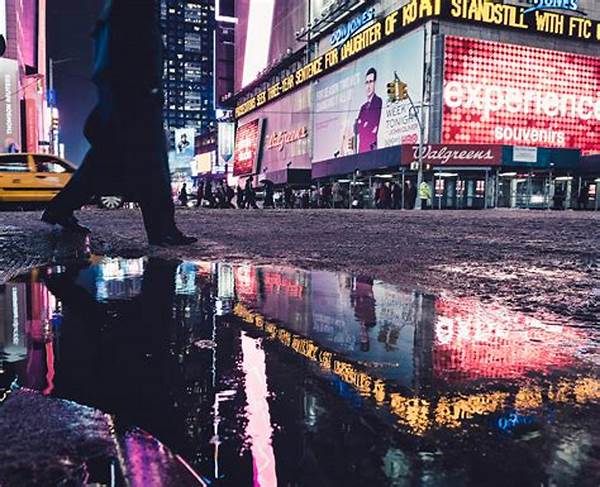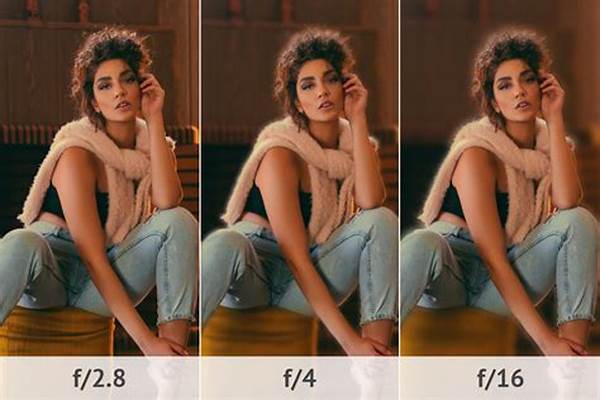Hey there, fellow street photography enthusiasts! If you’re like me, wandering through bustling streets with your camera, trying to capture those candid moments of life, you’ve probably realized that nailing the right lighting can be a game-changer. Whether it’s golden hour magic or the dramatic shadows cast by a streetlamp, understanding how to use light effectively can elevate your street photography skills to new heights. So, let’s dive into some awesome lighting tips for street photographers, and get ready to make those cityscapes shine!
Read Now : Natural Light Forest Photography Techniques
Mastering Natural Light
When it comes to lighting tips for street photographers, mastering natural light is a must. Natural light provides an ever-changing dynamic, turning ordinary shots into extraordinary ones. In the golden hour—those precious moments just after sunrise or before sunset—the sun casts a warm, diffused glow, which softens shadows and enriches colors. This is a great time to capture portraits or architectural details with a gentle charm that only golden hour can provide.
On the flip side, the harsh midday sun can create stark contrasts and deep shadows. While challenging, these conditions can also be used creatively. Embrace the bold shadows and contrasts as they can add drama and depth to your photos. Make sure to experiment with different angles to see how the light interacts with your subjects. And let’s not forget about the clouds; overcast skies often act as a natural diffuser, perfect for grabbing those moody, introspective street scenes.
Street photography is about being ready for whatever lighting scenario the urban environment throws your way. Whether you’re chasing the serene softness of dawn or the vibrant chaos of a high noon street fair, understanding how to manipulate natural lighting will help you capture the true essence of urban life.
Street Lighting: An Urban Ally
For street photographers, artificial light sources are like a secret weapon. It’s all about finding the charm in neon signs, streetlights, or even the headlights of passing cars. Here are five snippets of wisdom:
1. Street lamps provide that classic, nostalgic glow to enhance nighttime vibes.
2. Neon signs can add pops of vibrant color; perfect for striking images.
3. Car headlights can be used for creative backlighting, offering a dramatic flair.
4. Windows illuminate the interiors; great for capturing intimate, candid moments.
5. Reflections in puddles or windows create layers and reflections that intrigue.
Lighting Equipment and Accessories
Let’s talk gear! While natural and street lights are our friends, sometimes a little help can make all the difference. When considering lighting tips for street photographers, it’s important to carry a few light-modifying tools. A compact reflector can help bounce natural light onto your subject, even in tight alleyways or crowded spaces. They come in handy when you want to control the shadow areas, highlighting specific features or scenes.
Additionally, portable LED panels are worth considering, especially for nighttime shots. These small, battery-powered lights are easy to carry and can be quickly adjusted to create the desired effect. By subtly illuminating your subject, they enhance the scene without overpowering the ambiance that street photographers love to capture.
Understanding how to adapt your lighting strategy based on the time of day and available sources—whether natural or artificial—will ensure your street photography is always on point. These tools can help bridge the gap between what you can achieve naturally and what you envision artistically.
The Role of Shadows
Shadows play a pivotal role in street photography. Here are some lighting tips for street photographers when working with shadows:
1. Shadows create depth: Play with different angles to find the perfect interplay of light and shadow.
2. Silhouettes: Use backlighting to create striking silhouettes against a sunset or city skyline.
3. Layering: Shadows can layer your composition, adding complexity and intrigue to your shots.
4. Emotional tone: Harsh shadows often bring a sense of mystery or tension.
5. Highlight details: Soft shadows enhance textures, like cobblestones or aged walls.
Read Now : Low-impact Materials In Graphic Design
6. Storytelling: Position shadows to lead the viewer’s eye through your narrative.
7. Pattern creation: Repetitive shadow patterns add a rhythmic quality.
8. Close-ups: Tiny shadow details can offer intimate glimpses into urban life.
9. Movement: Capture the dance of shadows created by people walking, cycling, or moving.
10. Experiment: Try shooting at different times of the day to see how shadows change.
Embracing the Night
Ah, the allure of nighttime street photography! Lighting tips for street photographers looking to master night scenes can open a whole new world of creativity. The streets take on a different character after dark, offering a canvas painted with artificial lights and deepening shadows. Embrace these contrasts by playing with long exposures, capturing the vibrant trails of taillights or the gentle glow of a storefront.
It’s worth noting that night photography often requires steadiness; a lightweight tripod or a stable surface can prevent blur from longer exposures. A good tip is to play with different ISO settings. Higher ISOs can capture more light, but be cautious of noise in the image. Many modern cameras handle these conditions well, but always experiment to find the sweet spot for your equipment.
Nighttime allows for experimentation with themes of isolation and intimacy. The dimly-lit streets and quiet corners can offer profound storytelling opportunities. Whether it’s a solitary figure under a street lamp or a couple silhouetted against a neon glow, cherish the unique ambiance that night brings to your street photography.
Capturing Mood and Atmosphere
Street photography is a beautiful mix of spontaneity and intention. When thinking of lighting tips for street photographers, it’s essential to focus on capturing the mood and atmosphere. These elements inject life and emotion into your photos, transforming simple moments into powerful narratives. Pay attention to how various lighting conditions alter the atmosphere—like how the soft, delicate light of early morning brings a sense of calm and reflection, while the harsh midday sun energizes the scene with vivid colors and dynamic contrast.
Experimenting with post-processing can further enhance mood. Subtle adjustments to highlights, shadows, and contrast can nudge the mood of your photo toward what you felt while taking the picture. Remember, the goal is not to alter reality but to reflect it through your perspective.
Crafting mood and atmosphere requires patience and an open mind. Let the city guide you—whether it’s the calm after a rain shower or the buzz of a weekend market. Embrace the happy accidents and unplanned encounters that shape the essence of street photography.
The Cool Stuff: Tricks of the Trade
Alright, let’s chat about the rad side of lighting tips for street photographers. Ever tried light painting? By moving a light source while keeping your camera stationary, you can create some wild visual effects. It’s super fun at night when the shutter stays open for a while. Another trick is to use ambient light creatively. Whether it’s the glow from your smartphone or the twinkle of holiday lights, mood lighting can craft intimate portraits and urban landscapes.
Street photography is as much about exploration as it is about skill. That’s where learning how light interacts with different environments—like city buildings, narrow alleyways, and bustling plazas—becomes key. If you catch that golden hour, bask in it; soak up its lovely warmth as it graces everything with beauty. But when natural light fades, be ready to embrace fluorescent lights and make them your ally. After all, mastering these lighting tips for street photographers isn’t about following rules but harnessing every bit of light to tell your story.
Reflecting on Your Journey
As you spend more time experimenting with lighting tips for street photographers, your skills will continuously evolve, and so will your personal style. Street photography is a journey—an ongoing discovery of how light, shadow, and urban life blend to create visual stories. Don’t be afraid to push the boundaries of what’s possible, whether through creative compositions or atmospheric lighting.
Every photo opportunity—each click of the shutter—adds a new dimension to your understanding and appreciation of light. So keep wandering, keep shooting, and let the streets be your teacher. You’ll find that each session, whether you’re chasing the golden hour or playing with city lights after dusk, will bring you closer to the artful mastery of street photography, one shot at a time.



